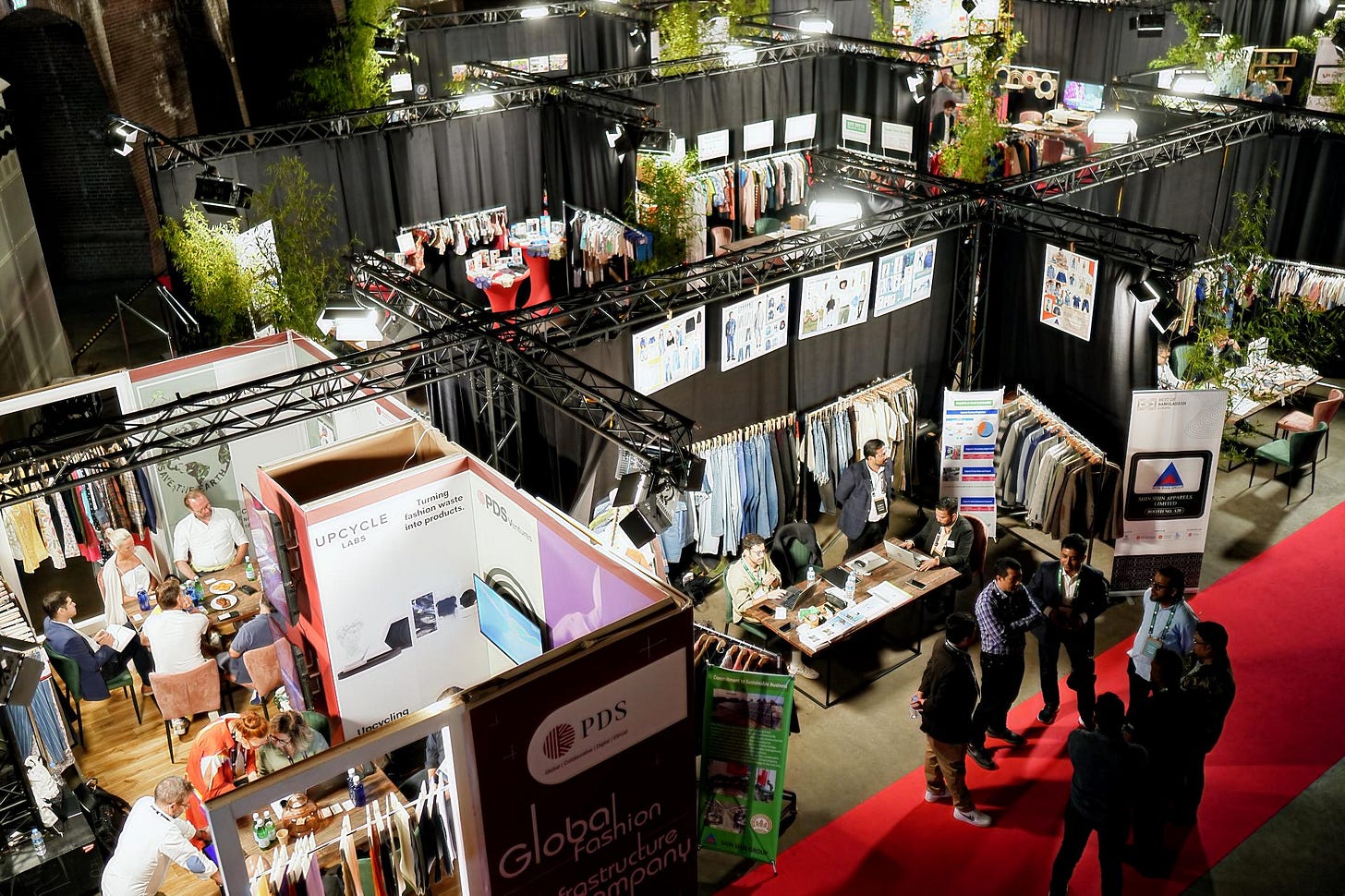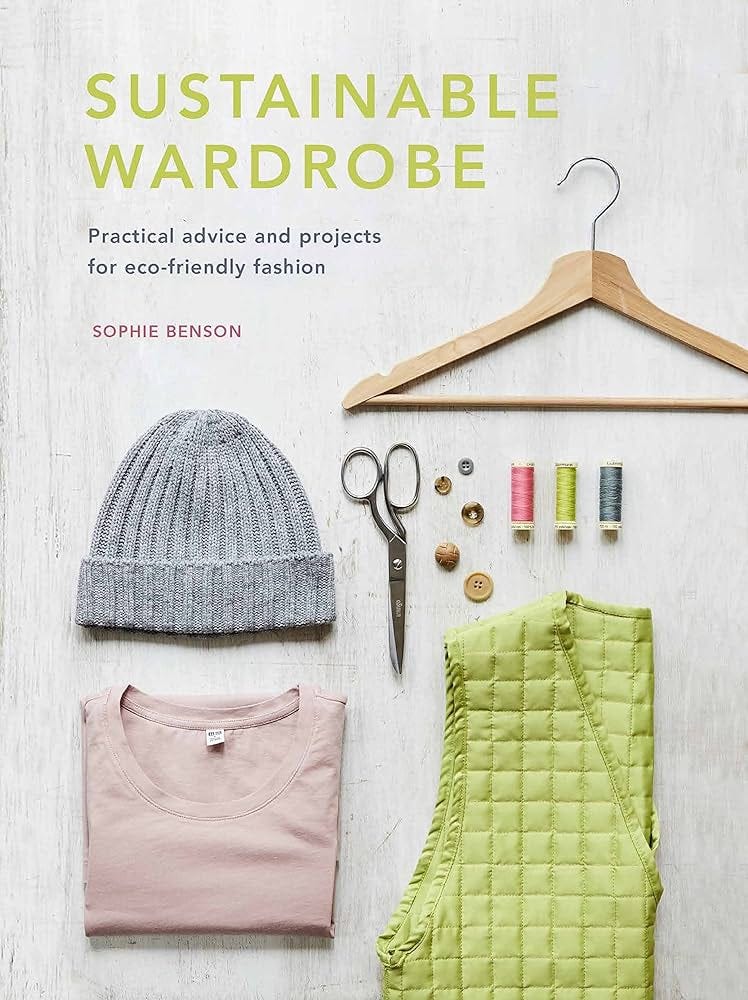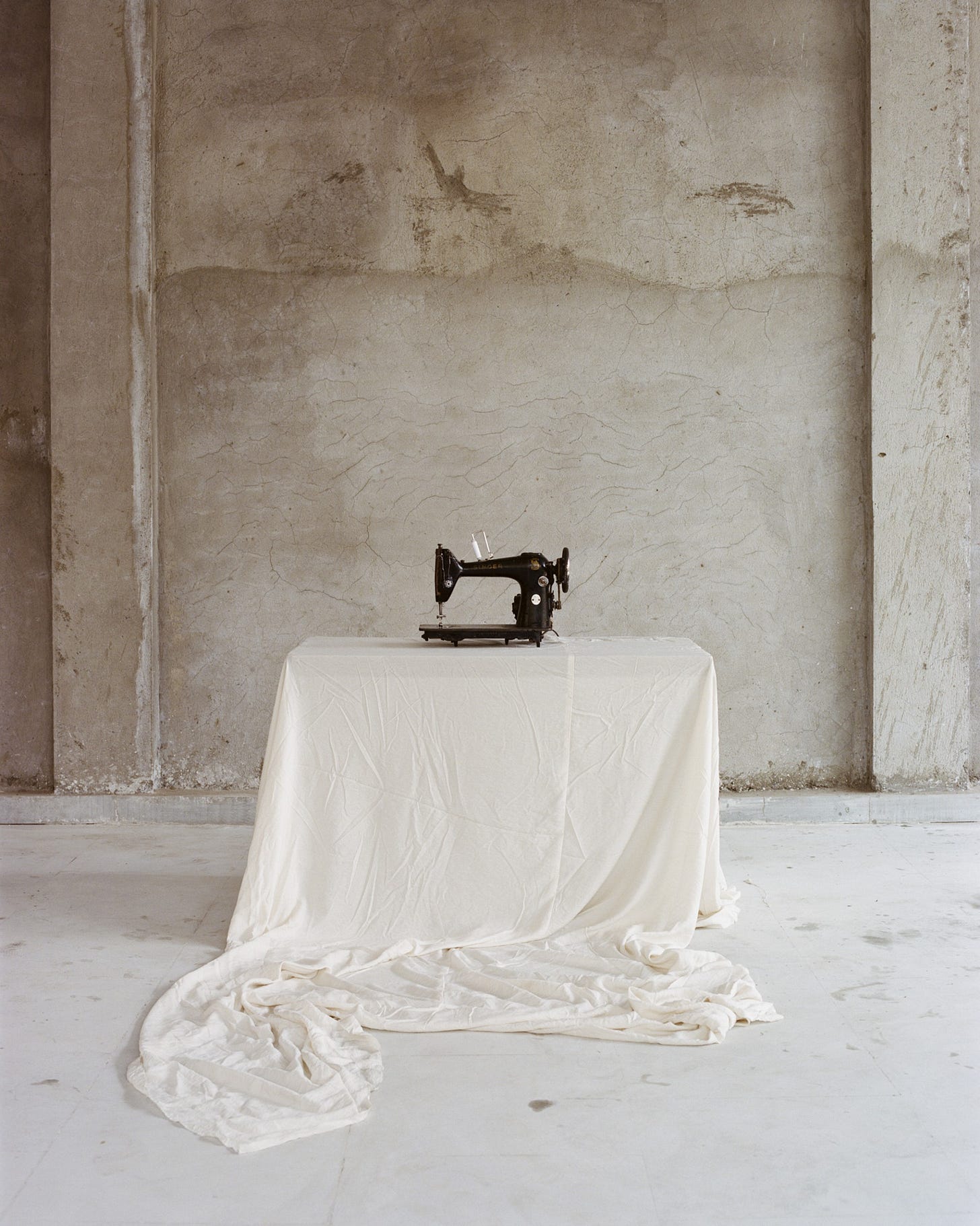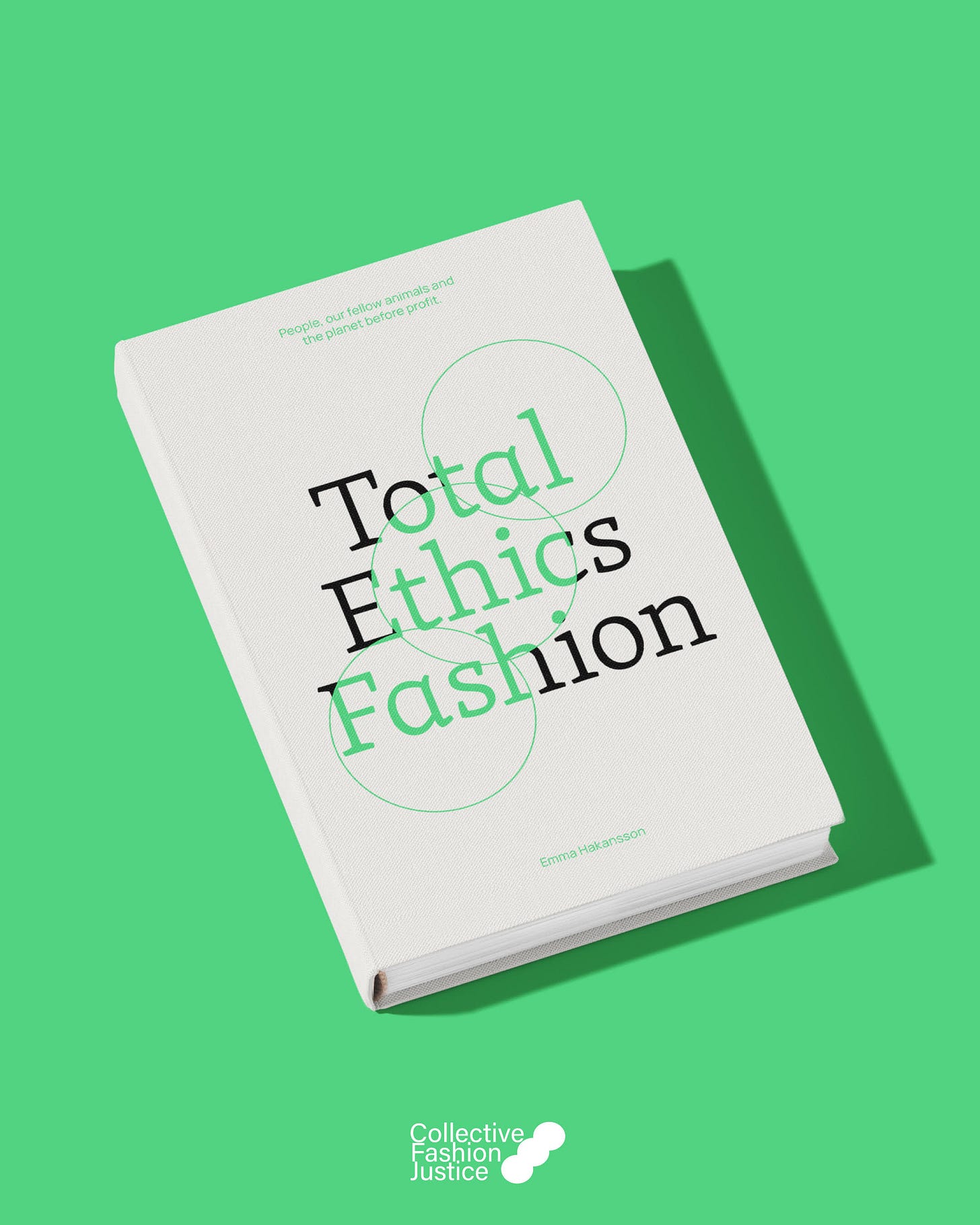September in Fashion, Condensed.
An interview with Collective Fashion Justice founder Emma Hakansson, the great Italian tailoring crisis, and is cotton really that bad for the environment?
Hello there,
In September, I attended the launch of Total Ethics Fashion (TEF), a book that explores ethics and sustainability in the fashion industry from a holistic standpoint. Its author, Collective Fashion Justice founder Emma Hakansson, is my interviewee in the paid section of the newsletter this month. Our conversation and the discussion held at Emma’s book launch focused on the aspects of sustainability that are often seen as inconvenient truths, even within the sustainable fashion community.
In TEF, Emma argues that a truly just fashion system must consider all life as equal. The book doesn’t sugarcoat the harsh realities of the leather industry, making it a confronting but important read.
Fashion has come a long way in banning the use of exotic skins and furs, but the leather industry has avoided a lot of the same scrutiny. This is despite the fact that cattle farming contributes to deforestation and that more than 150 chemicals, including the carcinogen chromium, are used in the tanning and processing of leather, making it far less natural than we think. TEF also details the trauma of slaughterhouse work, where people experience symptoms of PTSD similar to soldiers, and the hypocrisy in how we rank some animal lives as more valuable (dogs and cats) and some as less valuable (cows and sheep).
I’ve explored leather and its alternatives in-depth over the years, including in a piece I just wrote on luxury leather alternatives (below). I believe that conflicting views on the topic stem from the fact that most leather alternatives on the market aren’t necessarily more sustainable and aren’t yet able to match the durability, feel and performance of bovine leather.
Animal-free leather alternatives have been around for years (you will see them called vegan, cruelty-free or faux leather). The majority contain a lot of plastic, so they don’t last more than a few years and they have a sticky, sweaty, synthetic-y finish. Those made from PVC are particularly bad because they contain PFAs and other super toxic chemicals. Leather enthusiasts use these reasons to justify the existence of the industry.
My view is that it’s complicated (what isn’t?). On the one hand, can we really use the fact that the leather alternatives space is nascent as an excuse to keep using bovine leather, rather than a good reason to invest in the growth of alternatives? On the other hand, should we be encouraging people to buy synthetic alternatives that won’t last as long, knowing that they’ll end up buying replacements quicker than if they invested in good quality leather? The most “sustainable” option differs depending on whether you’re looking at it from the perspective of the customer, the environment, or animals. In Hakansson’s view, these three stakeholders should have equal standing.
As long as people eat meat, the leather industry will exist — it’s a valuable co-product. Encouragingly, perhaps seeing the writing on the wall, the sector is starting to clean up its supply chains with the help of organisations like the Leather Working Group (look for this certification when/if buying leather goods).
Accessories brands like Been London are doing exciting things in the leather and alternatives space. Been makes handbags (of which I have…a few) from recycled leather. They also partner with emerging alternative companies like Biophilica, which makes a leather-like material from argi-waste such as leaves collected from London parks. I really like that they’re supporting the innovators to experiment with and develop these materials while simultaneously giving new life to old leather.
There is a lot of funding going into the alternatives market at the moment, so I think in 10 years when the industry has matured, we’ll all be wearing products made from genuinely more sustainable, plastic-free leather alternatives like mycelium, agri-waste, and who knows what else.
It’s up to all of us to make up our minds based on our own values and priorities, but I encourage you to explore each side of the conversation and always buy consciously, regardless of your stance on leather.
As ever, I love to hear your thoughts and burning sustainable fashion questions. Hit reply at the end of the email to get in touch.
Until next month,
Meg X
Things I Did Write
Bangladesh Wants to Change the Narrative Around its Manufacturing Practices for Vogue Business
At the start of September, I attended the inaugural Best of Bangladesh Europe conference, hosted by the Bangladesh Apparel Exchange in Amsterdam. Bangladesh is the second biggest garment manufacturer in the world, but its reputation for sustainability and human rights hasn’t improved much since the Rana Plaza factory disaster in 2013. The event was a chance to show the world how far Bangladesh has come since then, but it didn’t go exactly to plan.
Luxury Leaders Are Betting On Leather Alternatives But Are Shoppers Ready To Buy Them? for Luxury Society
The leather alternatives market is booming, and luxury brands are investing heavily in their expansion. Hermès, Alexander McQueen, Ralph Lauren, and Stella McCartney are just some of the luxury brands that are partnering with innovative leather alternative companies as part of a growing shift towards more sustainable options offered to their customers. But are shoppers ready to buy them and can leather alternatives be produced at scale?
Things I Didn’t Write
Fashion Innovation Vs. Fashion Activism – Do We Have To Choose? by Karl Smith for FutureVVorld
Why Are Billions Of Clothes Never Even Sold? by Emily Chan for British Vogue
‘One Size Fits Nobody’: Markers Of High-quality Clothing Are Getting Harder To Find by Lucianne Tonti for The Guardian
Fashion’s Unseen Stories: The Homeworkers Of Tirupur – In Pictures for the Guardian
Resale’s Role in Decarbonizing Fashion: How Circular Strategies Can Lead to Significant Carbon Reduction by Trove and Worldly
The Great Italian Tailoring Crisis by Joshua Hunt for GQ
Once and For All: Is Cotton Really That Bad for the Environment? by Alden Wicker for EcoCult
The To-Do List
Sustainable Wardrobe: Practical Advice and Projects for Eco-friendly Fashion by Sophie Benson
Sophie is an amazing journalist whose name appears in this newsletter almost every month. She has just released her debut book, Sustainable Wardrobe, which is filled with tutorials, advice, and insights to help us understand our clothing in a more conscious way.
The Simple Solution to Fast Fashion — a TED Talk by Josephine Philips
I really enjoyed this TED talk by Josephine Philips, the founder of the clothing alterations app Sojo. She talks about the importance of caring for our clothes, which is often an overlooked solution in the world of sustainable fashion.
Fabricating Change: A Deep Dive into Material Solutions — A Series by Atmos
To coincide with fashion month, Atmos magazine did a whole series on materials, from traditional Indian fabrics to biomaterials, wool, next-gen innovations and more.
Total Ethics Fashion by Emma Hakansson
For a very thin book, Total Ethics Fashion packs a punch, but the overall tone is hopeful for the future of the fashion industry. Pick up your copy from Collective Fashion Justice at the button below.
Thank you for reading the Titian Thread Newsletter! This is where the free content ends. To continue reading the paid subscriber-only content below, hit the button below.
🚨FREE SUBSCRIBERS🚨: If you don’t see the rest of the newsletter above this line, click “Open in browser” at the top of the email or the three little dots above the “Upgrade to paid” section to read the full free section!
This month, paid subscribers can listen to my conversation with Emma Hakansson, the founder of Collective Fashion Justice and author of Total Ethics Fashion.









